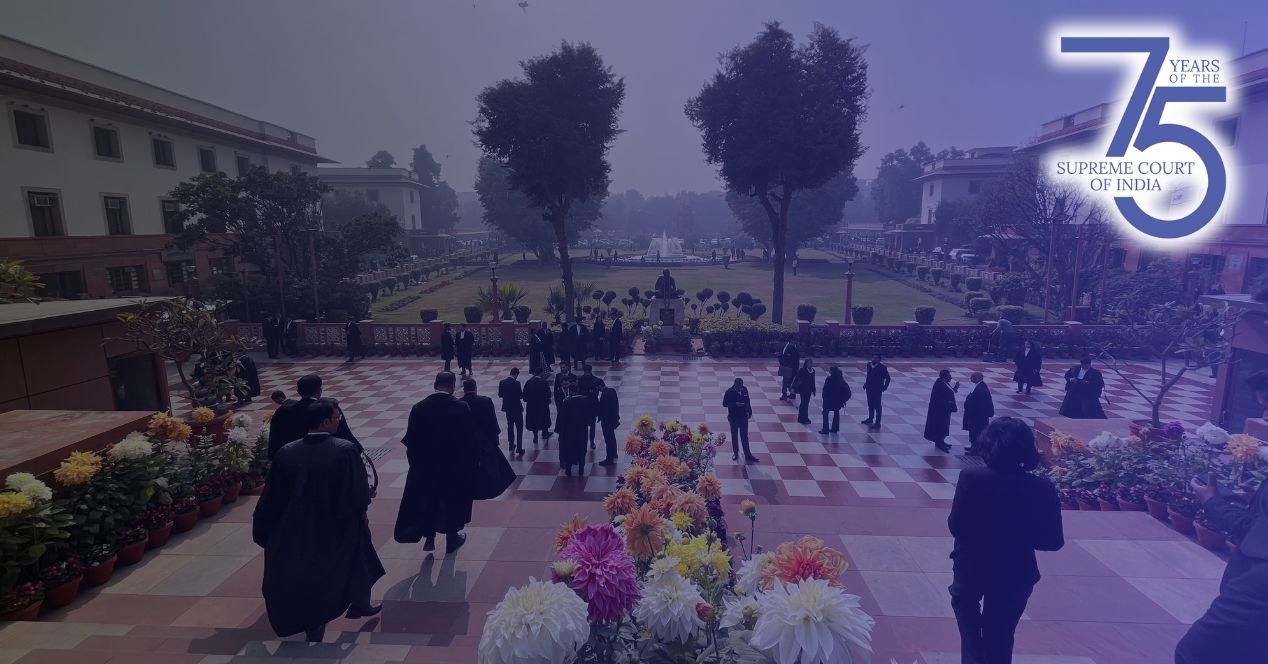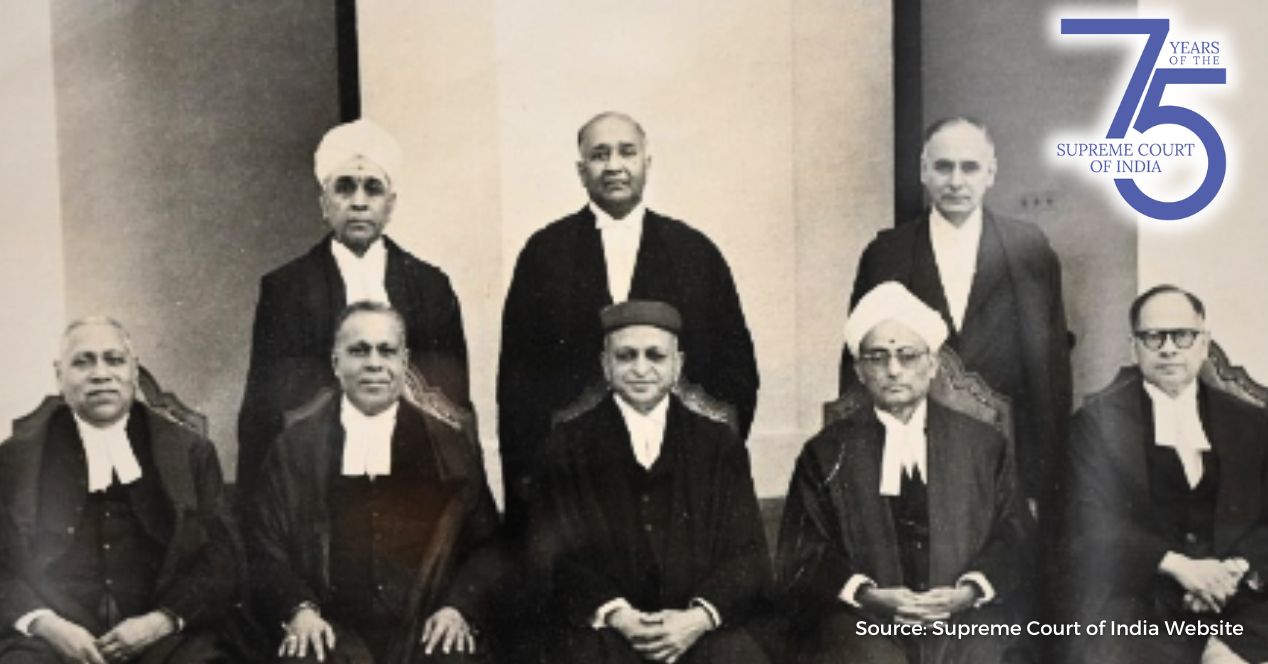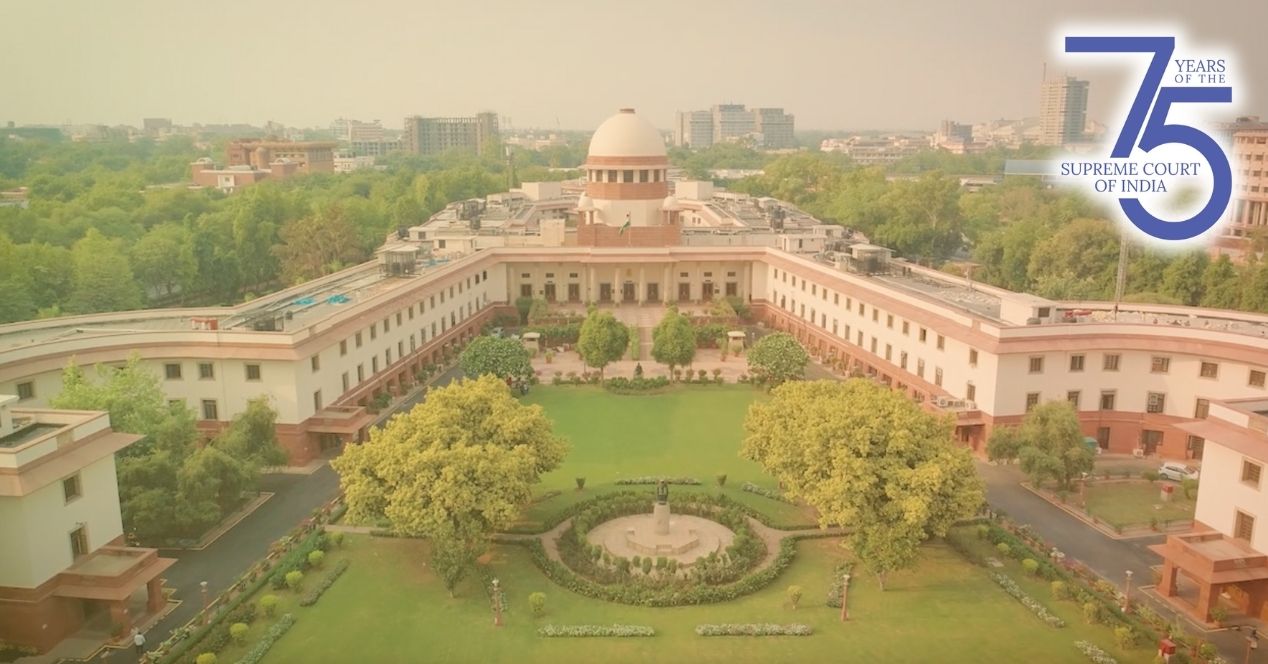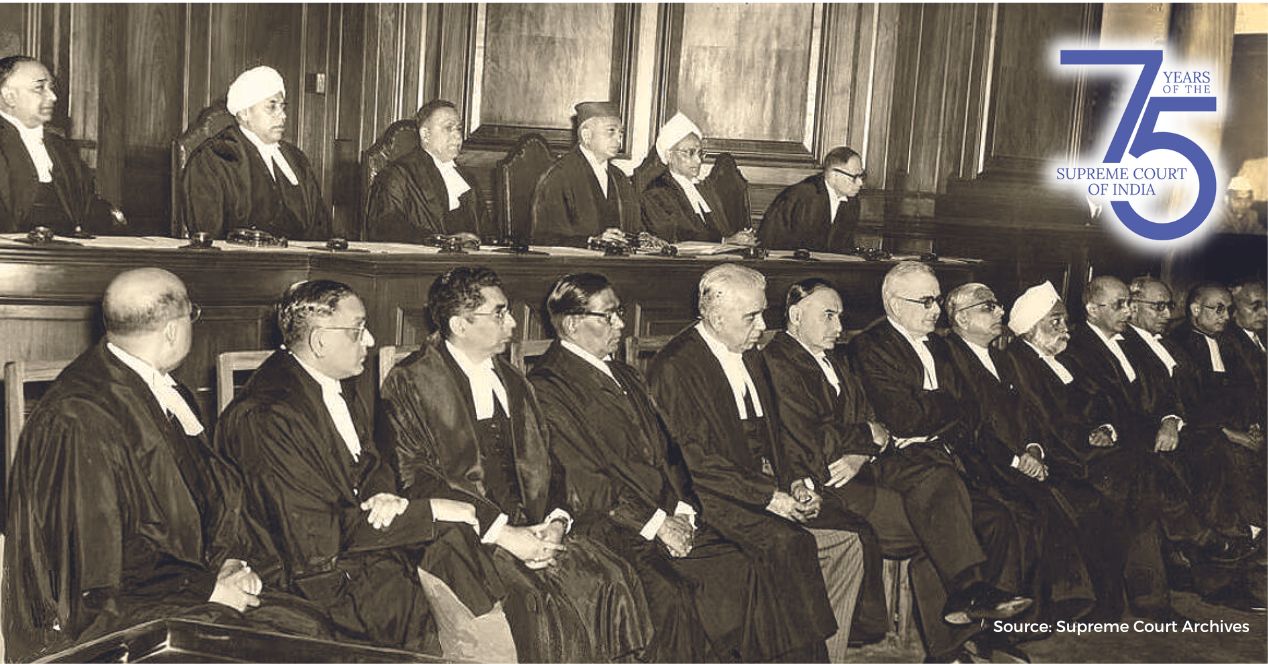Analysis
Waving flag
A quick look at the value of judicial symbolism in the backdrop of the Supreme Court’s recent unveiling of a new flag and insignia
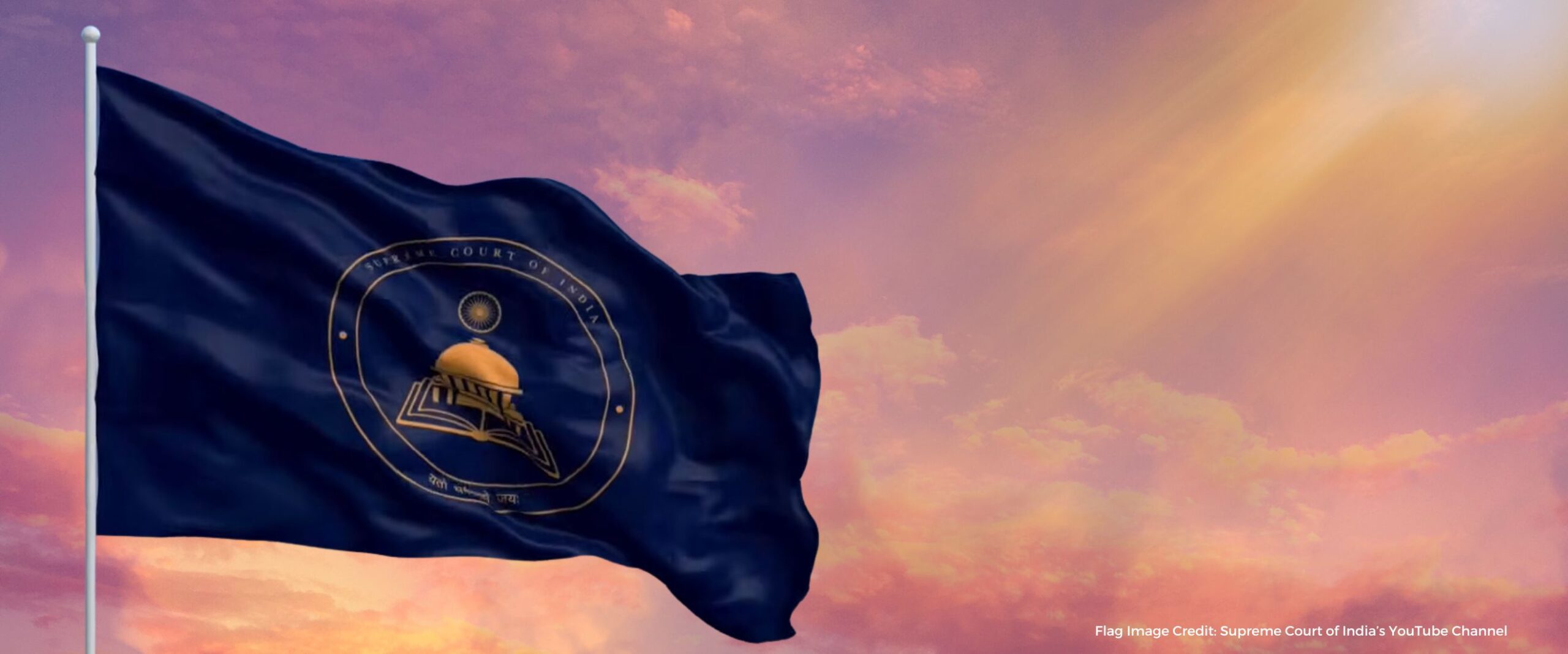
On Sunday, President Droupadi Murmu and CJI D.Y. Chandrachud unveiled a new flag and insignia for the Supreme Court at the National Conference of the District Judiciary. The event was held to mark 75 years of the Supreme Court.
An image projected on stage showcased the blue flag with a minimalist golden drawing of the Court’s rotunda emerging from the open pages of the Constitution. The Ashoka Chakra is placed above the rotunda. The entire design is framed by a circle, at the bottom of which are the words found in the Supreme Court emblem: Yato Dharma Tato Jayah. ‘Where there is dharma, there is victory.’
Traditionally, courts across the globe hoist national flags, either on the premises or inside courtrooms. The Indian Supreme Court has the national flag on the main building just below the rotunda. As legal scholar Shailesh Kumar puts it, the image of the Indian flag visible from far away symbolises both “national identity” and “reflects state’s authority and power over the judicial institution to adjudicate disputes and impart justice.”
Writing on the Supreme Court of the United States, political thinker Max Lerner explained that if the Court were to be viewed as an institution whose powers were under a constant threat of ‘attack’ by the executive, its survival depended upon the legitimacy it derived from the “psychological realm” of the people. Symbolism helps with this project of identity building.
Several constitutional courts have their own flag, and few symbols are stronger than a Constitution, which is often front and centre of such an exercise. The Indian Supreme Court’s website describes the Constitution as “the supreme legal authority” binding executive, judicial and legislative interests. This veneration of the Constitution has been a key part of the Court’s messaging, quite independent of the criticism that has challenged its agency to ‘guard’ constitutional rights and its ability to push back against executive excess.
In the new flag, reportedly designed by the National Institute of Fashion Technology, New Delhi, the Constitution is a prominent symbol. This visual representation of the book is an expression of the way in which the document exists in people’s imagination and emotions. Lerner notes that this kind of ‘constitutionalism’ is an important element of an apex court’s identity because both the Court and the Constitution derive legitimacy from “fear”—the fear is not an anticipation of the domination of judicial power, but the anxiety of “not having Court and Constitution to fall back upon.”
The design in the middle of the new flag will also serve as the Indian Supreme Court’s new insignia. The Court already has an emblem, which is a modification of the national emblem. Flags, emblems, insignias, seals—all of these are meant to convey authority and illustrate the might and guarantee of the institution. The design choices for them are often stepped in symbolism, which the authorities typically don’t shy away from addressing.
Which is why I find it intriguing that we didn’t get an explanation about the choice of navy blue as the colour of the Supreme Court’s new flag. My first thought was that it’s the same shade as the Ambedkarite flag, a symbol of Dalit assertion and solidarity. Perhaps the more direct (and the more ‘national’) inspiration is the colour of the Ashoka Chakra, the wheel of law that features in the Indian flag. Ultimately, both derive their legacy from the Buddhist canon.
Meaning is what the people make of it, and for many oppressed groups, the blue of Dr Ambedkar’s suit has also found expression in flags and depictions of the Constitution. Meanings also keep shifting, especially in the context of a polyvocal court that exists on an endless continuum, constantly adjusting its decisions and positions. Speaking of symbolism, the continuum could also be seen as a tightrope on which the Court has been balancing itself for 75 years.
— Sushovan Patnaik, Court Reporter
This article was first featured in SCO’s Weekly newsletter. Sign up now!

